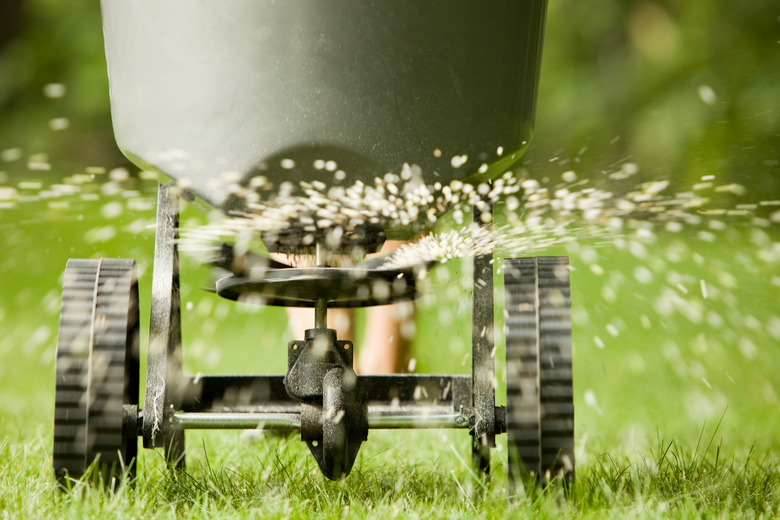How To Use Fertilizer With Ironite
We may receive a commission on purchases made from links.
If your lawn and plants are starting to look like they're having an identity crisis turning more yellow than green, adding an application of iron found in Ironite could be the answer. Applying Ironite granules is similar to applying other types of fertilizer granules. Manufactured and sold through Pennington, Ironite quickly greens up turfgrass, as well as your shrubs, trees, and vegetables.
Characteristics of Ironite
Characteristics of Ironite
Standard Ironite, Ironite Mineral Supplement 1-0-1, is a concentrated formula of granules that corrects yellowing or pale-green foliage caused by a deficiency in nutrients without the excessive growth caused by nitrogen. The concentrated formula contains 20 percent iron, 8 percent calcium, 5 percent sulfur, and just 1 percent of both potash and nitrogen. All the minerals work together to green up your garden and lawn. Unlike nitrogen, which produces excessive growth, Ironite will help green your lawn without promoting excessive growth.
When used according to package directions, Ironite won't burn your plants and won't stain hardscape areas like driveways or patios. It's safe to use in your gardens, around trees, and on your vegetables. You can use Ironite year-round to boost your regular fertilizer routine.
Ironite Mineral Supplement also contains Advanced Soil Technology. Pennington claims that AST improves the physical characteristics of the soil by providing two key benefits: reducing soil loss and improving water penetration. This means less watering, as the soil retains more moisture. You can purchase Ironite in 30-, 15-, and 3-pound bags.
Applying Ironite to Lawns
Applying Ironite to Lawns
When applying Ironite to lawns, use no more than 3 pounds per 1,000 feet to avoid burning your turfgrass. However, and as needed, you can use Ironite every 30 to 60 days throughout the growing season. Mow and water the turfgrass one to two days before applying the Ironite granules. Avoid applying the product if heavy rains are expected in your area as it can be washed from the targeted area.
Depending on your specific spreader, the Ironite spreader chart recommends a setting of 3 when using a Pennington or Scotts broadcast spreader. However, after watching the flow rate, if you notice the Ironite coming out of the spreader too slowly or too quickly, adjust the setting. Additionally, remember to close the spreader when stopping, filling, or turning. Once you have the correct setting and have filled the spreader, you are now ready to start applying the Ironite to your actively growing lawn.
Start the application around the perimeter of the lawn and then make overlapping sweeps throughout the remainder to avoid gaps in the coverage. Don't apply Ironite near storm drains, drainage ditches, or sources of water. After applying, sweep off any of the product from hardscapes back into the lawn and then thoroughly water the area.
Applying Ironite to Other Plants
Applying Ironite to Other Plants
When used as a supplement to other fertilizers, Ironite Mineral Supplement gives your plants and trees an extra dose of greening iron to keep everything growing and looking healthy. You can use Ironite on a range of plants in your garden, including ornamental shrubs and trees, flowering plants, berries, vegetables, and all types of fruit trees.
Directions on how to use Ironite on trees, shrubs, and other plants are relatively basic and the same as when applying other granular fertilizers to the area. Apply the product to your established plants and trees as needed at a rate of 1/3 pound per every 100 square feet every 30 to 60 days. You can easily measure 1/3 pound of Ironite by measuring out 1/2 cup of the product, while 100 square feet would be an area size of 10 x 10 feet or 5 x 20 feet. Spread the Ironite evenly over the area, scratch it into the soil, and then water it. Once dry, it's safe for pets and children to enter the area.
